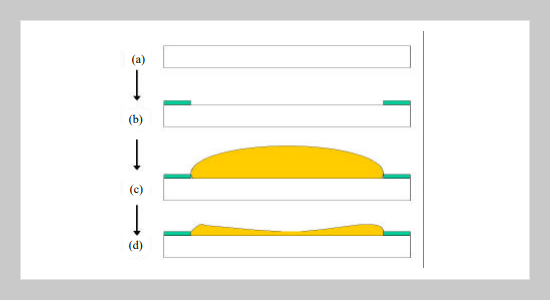Chin-Tai Chen This email address is being protected from spambots. You need JavaScript enabled to view it.1 and Han-Wei Su1 1Opto-Electronics & Systems Laboratories Industrial Technology Research Institute Tainan, Taiwan 741, R.O.C.
Received:
January 16, 2004
Accepted:
March 16, 2004
Publication Date:
June 1, 2004
Download Citation:
||https://doi.org/10.6180/jase.2004.7.2.14
The paper had experimentally studied the fluidic behavior and product of micro-lens fabrication that the polyvinyl alcohol (PVA) 20% solutions were used. The 5 inch photo mask first patterned the 4 inch glass substrate with variety of circles surrounded by Teflon AF1601S (amorphous fluoropolymer), which circular diameters ranged from 50 mm up to 2.15 mm. Subsequently, the solution was injected onto circular areas by using simple syringes. Consequently, the micro-lenses with circular shapes, as patterned by the mask, were successfully self-formed. We found that the geometry of final solid lenses, after water solvent completely evaporated, were characterized with one ring-shaped rib located at near 18% of the diameter line. It turned out that the maximum and minimum heights of lens happened to the tip of the rib and the center of the lens, respectively. The concave topography of lenses with ring-shaped ribs could quite help on the fundamental design of concave mic ro-lenses in optical MEMS chips for the future.ABSTRACT
Keywords:
Microlens, Fluidic Behavior, Ring-shaped Rib, MEMS
REFERENCES
















